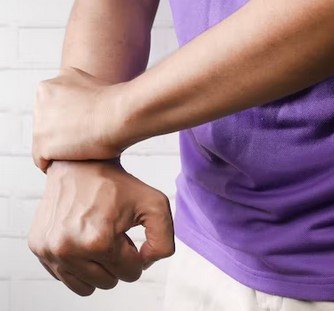Arthritis and Physiotherapy
There are so many different types and subtypes of arthritis, it’s crazy! At this point in time, there are more than 100 types (ya, that’s why I said it’s crazy). The most common arthritis are:
- osteoarthritis (OA)
- rheumatoid arthritis (RA)
- psoriatic arthritis (PsA)
- fibromyalgia
- gout
And the good news is that physiotherapy and hand therapy can help; as well as it can be maintained and controlled, with lots of careful maintenance.
Contents
The most common arthritis
By far is without a doubt, osteoarthritis.
The reason for this is because it’s often mechanical ie it’s something that develops usually due to degeneration (wear and tear) from use over a period of time.
In some cases, osteoarthritis can happen because of
- local inflammations and infections
- trauma such as falling directly onto that joint
- etc
This leads to rather unpleasant and often painful bone-on-bone grinding movement. In very bad cases of osteoarthritis, what happens is that even the bones that are affected can start to wear out, crack and chip (of course this is even more painful), with lots of:In a nutshell, osteoarthritis happens when the shock-absorbing cartilage of the joint is worn out; with no cushion between the bones in a joint.
- pain
- swelling
- stiffness
- inflammation
Role of physiotherapy and hand therapy

Physiotherapists and hand therapists are important in arthritis management and treatment and our focus will typically revolve around
- slowing the degradation of both soft and hard structures (be it cartilage, bones, etc)
- decrease the localized inflammation, which will powerfully decrease the amount of damage, stiffness, pain etc
- get you to be as involved as possible in responsibilies, roles and projects you care for by improving muscle strength, stability and stamina
- modify tasks and activities so that it will become less strenous or taxing for your joints such as using tools or decreasing a step or two. An example is if eating with chopsticks is very important, but the use of one is too taxing on your joints, you can consider a modified chopstick that does not strain your hand and finger joints. This is one example of how to modify your tasks at home or at work or at play to help you do things easier
Some physiotherapy and hand therapy treatments
Some treatments you may receive when you see a physio:
- Heat treatment to warm up tight, stiff or aching muscles (this helps improve movement and decrease pain)
- Cold therapy to carefully bring down any inflammation or swelling that’s causing pain, stiffness and fear.
- Control, graded and customized exercise therapy to strengthen up the muscles outside and around the affected joints (and over the entire body). Muscles behave like shock absorbers, which will help to offload weight and protect compromised joints.
- Mobilization of the joints and muscles especially if they’re painful, stiff and patient is fearful. With a little bit of heat treatment to loosen up joints and muscles, then very gentle and gradual stretching and mobilization to loosen up prior and post exercises.
- When the time is suitable, we may also introduce ultrasound therapy to accelerate soft tissue healing in the joints; and it can help to decrease swelling and pain too.
Where To Next?
- Go to Home / Start
- Learn and find out more about your pains (bones, muscles, joints, tendons, ligaments, nerves etc) at Pain Conditions & Injuries
- Visit our shop to see products we recommend for pain relief, heating, treatments and more
- Contact us





